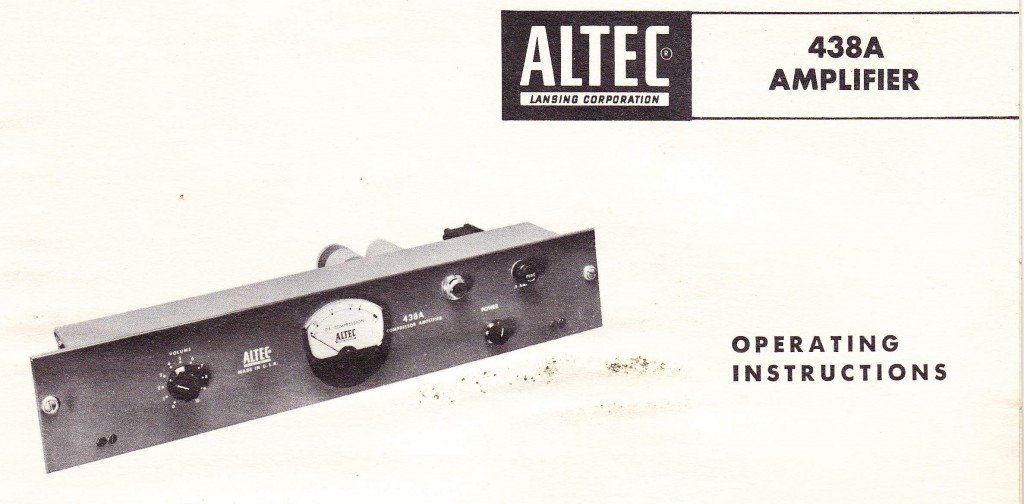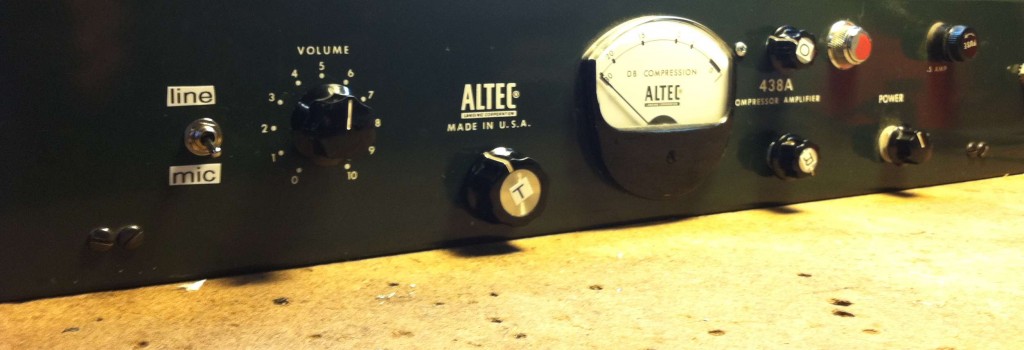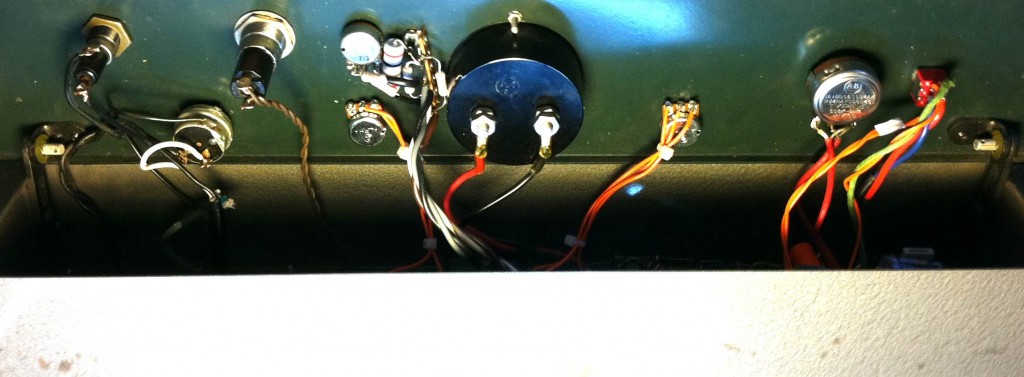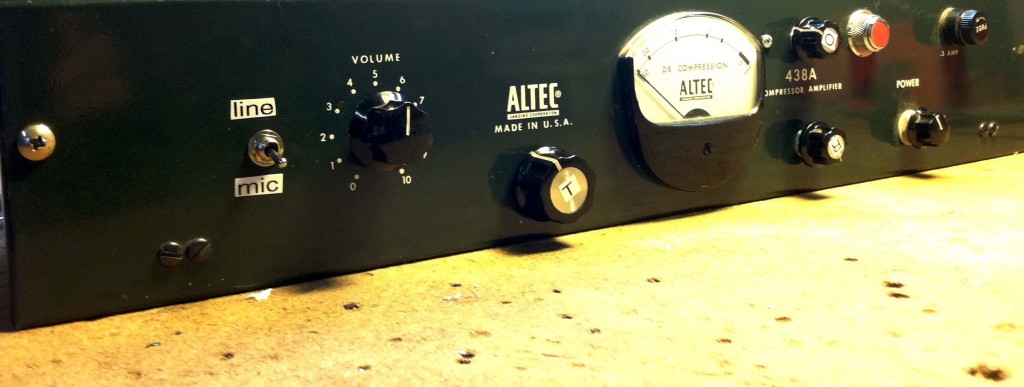 As we discussed in previous posts, the Altec 438A is an audio compressor designed in the late 1950s primarily for use in public-address sound systems. It has a microphone pre-amp built in, and an absolute minimum of controls: one knob determines the level of the signal that hits the input of the compressor; turn this knob all the way down and you hear silence; turn it high enough and you get a highly-amplified version of the input signal; keep turning it up and you get a highly amplified signal with the peaks attenuated or ‘compressed.’ There is also a 2nd input with slightly less gain; this unbalanced 100k ohm nominal input shares the same volume pot as the mic preamp. I suppose that the 438A was useful enough in its day, as there are hundreds still to be found; but for use in a modern music-production environment, it’s pretty useless. The levels are all wrong, there is not enough control of the compression parameters, and there is no proper balanced line-level input.
As we discussed in previous posts, the Altec 438A is an audio compressor designed in the late 1950s primarily for use in public-address sound systems. It has a microphone pre-amp built in, and an absolute minimum of controls: one knob determines the level of the signal that hits the input of the compressor; turn this knob all the way down and you hear silence; turn it high enough and you get a highly-amplified version of the input signal; keep turning it up and you get a highly amplified signal with the peaks attenuated or ‘compressed.’ There is also a 2nd input with slightly less gain; this unbalanced 100k ohm nominal input shares the same volume pot as the mic preamp. I suppose that the 438A was useful enough in its day, as there are hundreds still to be found; but for use in a modern music-production environment, it’s pretty useless. The levels are all wrong, there is not enough control of the compression parameters, and there is no proper balanced line-level input.
 Here is how I took an original-spec 438A and modify it so that one could use it alongside more modern compressors in a music-production studio.
Here is how I took an original-spec 438A and modify it so that one could use it alongside more modern compressors in a music-production studio.
 (From Left to Right): A switch to determine if either the two-stage mic preamp OR a balanced 15K nominal signal hits the input transformer of the compression amp; a threshold/ratio combo control ala the later Altec 436C; (top) an balanced output level control/pad ala the Gates Sta-Level (see here for details); (bottom) a release time control ala the Altec 436C. The original volume pot still functions as an interstage gain control for the mic preamp.
(From Left to Right): A switch to determine if either the two-stage mic preamp OR a balanced 15K nominal signal hits the input transformer of the compression amp; a threshold/ratio combo control ala the later Altec 436C; (top) an balanced output level control/pad ala the Gates Sta-Level (see here for details); (bottom) a release time control ala the Altec 436C. The original volume pot still functions as an interstage gain control for the mic preamp.
 Here’s the unit with the face flipped down, revealing the wiring to the newly added pots and switches. At my client’s request I used 11-position detented pots; ALPHA makes these in a huge range of values and Mouser stocks them for just about $2 a piece. A great value IMO. I used sliver-plated 24ga stranded wire for the audio wiring and 22ga solid copper for the control signal wiring.
Here’s the unit with the face flipped down, revealing the wiring to the newly added pots and switches. At my client’s request I used 11-position detented pots; ALPHA makes these in a huge range of values and Mouser stocks them for just about $2 a piece. A great value IMO. I used sliver-plated 24ga stranded wire for the audio wiring and 22ga solid copper for the control signal wiring.
 This 438A is now ready for use in any situation where a gentle, vintage compression sound is desired. The input and output levels are what you would expect from a standard pro-audio compressor; the release timing is widely variable (but never very fast – this would cause some artifacts due to the way these simple vari-mu compressors function); and the threshold/ratio control will yield a wide range of results as well. Since the unit was in good physical and electrical shape, no re-tubing or re-capping was necessary.
This 438A is now ready for use in any situation where a gentle, vintage compression sound is desired. The input and output levels are what you would expect from a standard pro-audio compressor; the release timing is widely variable (but never very fast – this would cause some artifacts due to the way these simple vari-mu compressors function); and the threshold/ratio control will yield a wide range of results as well. Since the unit was in good physical and electrical shape, no re-tubing or re-capping was necessary.
5 replies on “Altec 438A – Modified for modern music production use”
You can also modify the attack by putting in a switch to select a cap about half the value (.5 ufd) instead of the stock Altec (1.0 ufd). This gives you a faster attack time.
hello , can you explain the modification for the mic / line switch ?
Is this a simple PAD, and is the line signal still going thru the input transformer ? thanks
“Line” injects signal directly to primary of transformer #2, bypassing transfo 1 and gain stage 1/2
CR
thanks
Do you have a schematic with the changes you’ve made? Am curious how to expand compression ratio to this circuit. Thanks.